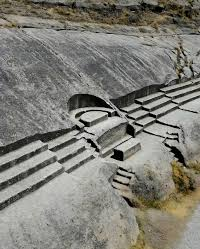
Qamana inca

Inca Qamana is a lesser-known but culturally significant archaeological site located near Arequipa, Peru. The name "Qamana" comes from the Quechua language and is associated with sustenance or nourishment, reflecting the site's possible agricultural or ceremonial purpose in the Inca era. Built into a highland landscape of volcanic stone and natural terraces, Inca Qamana is believed to have served as a ritual center or a rest stop along Inca trails connecting the coast and the highlands. The site features remains of walls, platforms, and irrigation channels, which illustrate the Incas' deep understanding of engineering and landscape adaptation.
Though smaller than major Inca complexes like Machu Picchu or Sacsayhuamán, Inca Qamana offers an intimate glimpse into the daily and spiritual lives of Andean people. Its remote location and the tranquil surrounding environment make it a peaceful place for reflection and exploration. Visiting this site also sheds light on the lesser-documented aspects of Inca expansion in southern Peru, particularly their integration with pre-Inca cultures and adaptation to volcanic terrain. For travelers seeking a more off-the-beaten-path experience, Inca Qamana delivers cultural richness without the crowds.
Logistics:
Inka Qamaña, also known as "El Descanso del Inca," is an archaeological site located in the Yunguyo province of the Puno region, near the border with Bolivia. The site is approximately 5 kilometers (3.1 miles) from the town of Yunguyo. Visitors typically reach the site by vehicle from Yunguyo, followed by a short hike of about 1 kilometer (0.6 miles) to access the ruins. The trail is relatively easy, with minimal elevation gain, making it accessible to most hikers.



